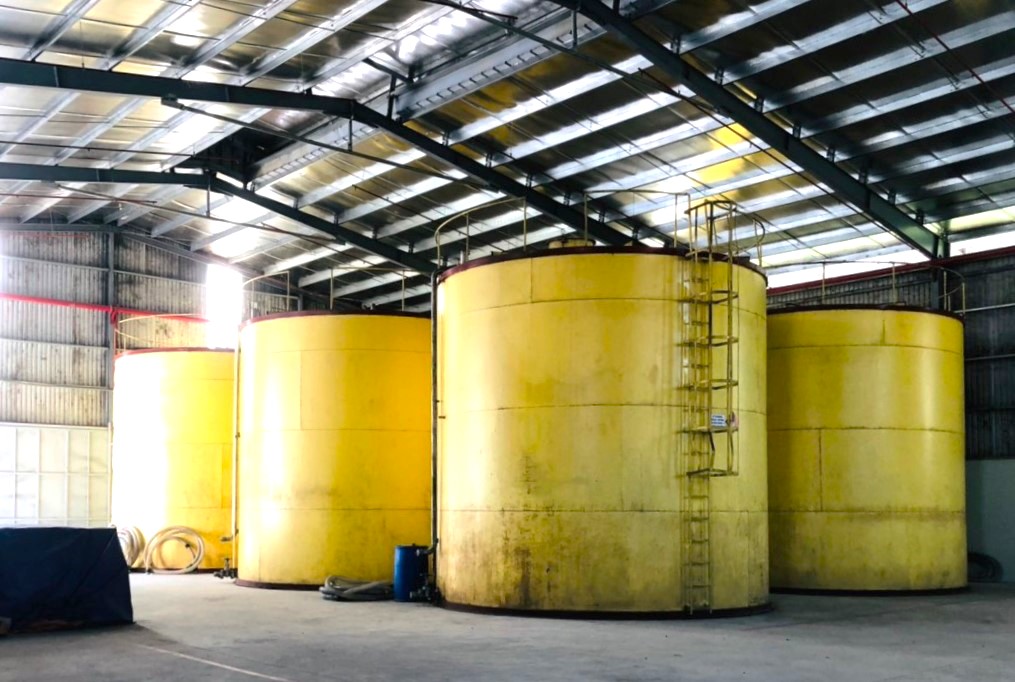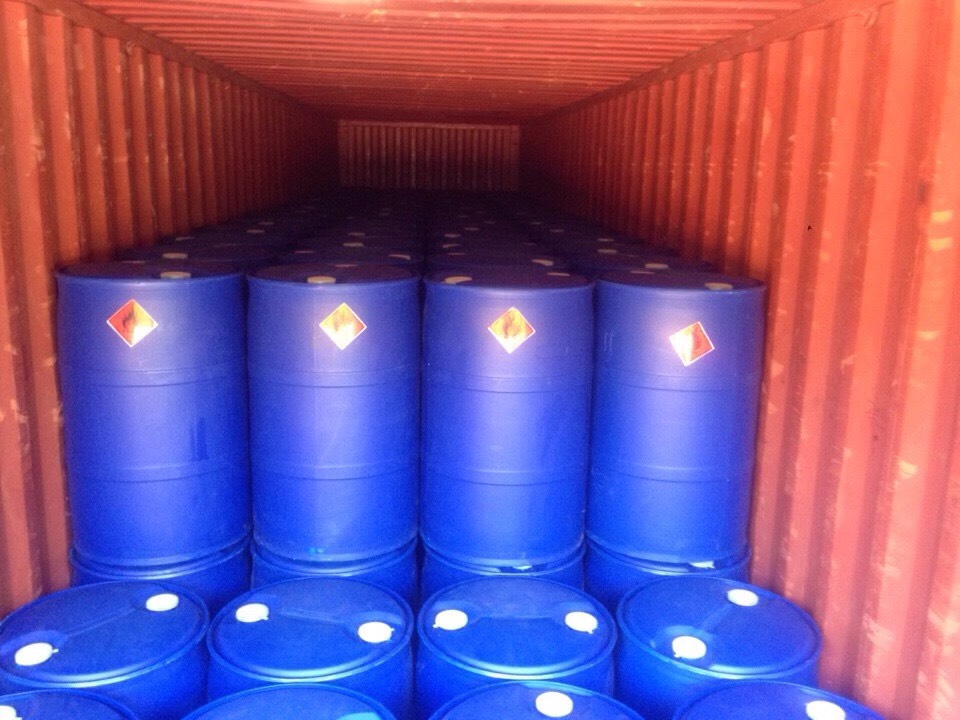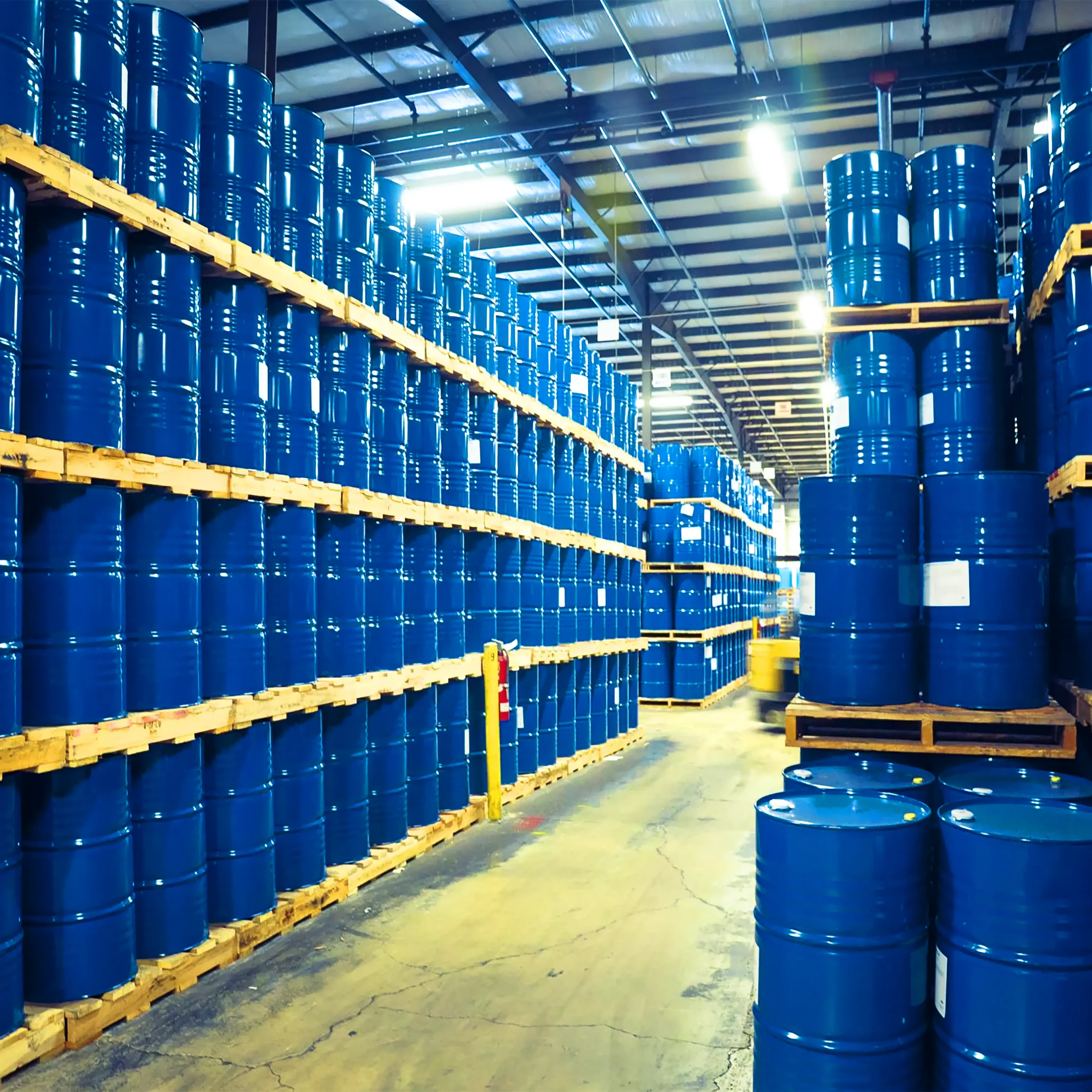1. Introduction to Ethanol
Ethanol, also known as ethyl alcohol or industrial alcohol, is an organic compound with the chemical formula C2H5OH. This substance is a familiar type of alcohol found in various industries and daily life, from beverages to pharmaceuticals and biofuels. Ethanol is also referred to by several names such as grain alcohol or alcohol in common usage.
In today’s world, as the demand for cleaner energy sources grows, ethanol has become a key ingredient in the production of biofuels, helping to reduce emissions and support environmental sustainability.
VCARGO’s large industrial ethanol storage tank system is used to store and distribute ethanol alcohol during the production process.
2. Key Properties of Ethanol
2.1. Physical Properties
Ethanol possesses several noteworthy physical properties, including:
- Appearance: It is a clear, colorless liquid with a mild pleasant odor.
- Density: 0.7936 g/ml at 15°C, which makes it lighter than water.
- Boiling point: 78.39°C, meaning it can easily evaporate at room temperature.
- Freezing point: -114.15°C, which allows ethanol to be used in antifreeze products.
- Solubility: Ethanol is completely soluble in water, making it highly versatile for various industrial and commercial applications as a solvent and diluent.
2.2. Chemical Properties
Ethanol participates in several significant chemical reactions:
-
Reaction with metals: Ethanol reacts with sodium to produce sodium ethoxide and hydrogen gas:
2C2H5OH + 2Na → 2C2H5ONa + H2
-
Esterification: Ethanol reacts with organic acids, such as acetic acid, to form esters, widely used in flavorings and solvents:
CH3COOH + C2H5OH → CH3COOC2H5 + H2O
-
Oxidation: Ethanol can be partially oxidized in the presence of a copper catalyst (CuO) to form acetaldehyde:
C2H5OH + CuO → CH3CHO + H2O + Cu
Due to these properties, ethanol is widely used in various fields, from industrial production to medical applications.
The container truck is being weighed to transport a large quantity of ethanol. Industrial goods are transported using specialized trucks.
3. Ethanol Production Process
There are several methods to produce ethanol depending on the scale and the purpose of production.
3.1. Ethanol Production by Fermentation
Fermentation is the most common method of ethanol production, particularly in the beverage industry. The process utilizes carbohydrate-rich sources like corn, sugarcane, barley, and cassava. Under anaerobic conditions, microorganisms such as yeast convert sugars into ethanol and carbon dioxide.
3.2. Ethanol Production from Ethylene Hydration
In the petrochemical industry, ethanol can also be produced through the hydration of ethylene using an acid catalyst. This synthetic process is often used in large-scale production facilities where higher volumes of ethanol are needed.
3.3. Distillation of Ethanol
Ethanol can also be distilled from solutions containing it. This method involves heating the ethanol-water mixture, where ethanol vaporizes and is then condensed into pure ethanol. Distillation is widely used in the production of beverages and industrial-grade ethanol.
Drums containing ethanol and chemicals are being stored in the VCARGO warehouse.
4. Applications of Ethanol in Industry and Daily Life
4.1. Industrial Applications
Ethanol plays a critical role in various industries, from fuel production to chemicals:
- Biofuel production: Ethanol is a key component in biofuels like E5 and E10 gasoline blends, which help reduce greenhouse gas emissions and improve engine efficiency.
- Antifreeze products: Thanks to its low freezing point, ethanol is commonly used in antifreeze formulations for automobiles and industrial machinery.
- Textile and printing industries: Ethanol is utilized in the cleaning and preparation of fabrics, as well as in printing inks to ensure smooth application.
- Electronics industry: Ethanol is essential in cleaning circuit boards and microelectronics, ensuring the purity and safety of sensitive components.
4.2. Food and Beverage Industry
In the food industry, ethanol serves as a key ingredient in the production of:
- Alcoholic beverages like beer, wine, spirits, and cocktails.
- Food flavorings: Ethanol is used as a solvent in the preparation of flavor extracts and preservatives.
4.3. Pharmaceutical and Medical Applications
Ethanol is one of the most effective disinfectants and plays an essential role in the medical field:
- Antiseptic solutions: Ethanol is commonly used in disinfectants for cleaning medical tools and wound treatment due to its strong antibacterial properties.
- Pharmaceutical production: Ethanol is a key ingredient in the formulation of sleeping aids and various medications.
- Solvent for drugs: Ethanol is often used as a solvent in the production of medicinal solutions and drug formulations.
Ethanol drums are being transported by forklift from the container to the VCARGO warehouse.
5. Safety and Storage Guidelines for Ethanol
Although ethanol is highly useful, it can pose certain risks if not handled or stored correctly.
5.1. Storage Safety Guidelines
Ethanol should be stored in:
- Cool, dry, and well-ventilated areas away from direct sunlight.
- Separated from other flammable chemicals to minimize the risk of fires or explosions.
- Areas away from residential zones or water supplies to prevent environmental contamination.
5.2. Usage Safety Guidelines
When working with ethanol in industrial or laboratory settings:
- Ensure you wear proper protective equipment such as gloves, goggles, and respirators.
- Maintain good ventilation in the workspace to avoid inhalation of ethanol vapors, which can cause dizziness, nausea, or headaches.
VCARGO’s facility is involved in the production and storage of ethanol, chemicals, agricultural products, and cassava chips.
6. Health Risks Associated with Ethanol
While ethanol is highly beneficial, improper use or prolonged exposure can lead to health issues. Inhalation or direct contact with ethanol can cause symptoms such as dizziness, nausea, or skin irritation. Therefore, following proper safety protocols when handling ethanol is essential for preventing potential health hazards.
7. Conclusion
Ethanol is a vital chemical with extensive applications across various industries and everyday life. From biofuel production to food and beverage preparation, and from industrial cleaning to medical uses, ethanol contributes to both economic growth and environmental sustainability. However, it is crucial to handle and store ethanol with care to avoid any risks to health and safety.

 Tiếng Việt
Tiếng Việt






